Week 1
Describe two works by Bruce Nauman (include images) where he frames every day actions (non-heroic, banal) as art. How are they “framed” as art, and what does the framing do to our understanding and experience of the actions?
One Hundred Live and Die 1984
This artwork is framed by the usage of four columns, creating a border, containing 100 words relating life and death with different actions, emotions, and colors. It can be interpreted as poetic and vulgar. The artist uses framing to bring light to different aspects of life that may be overlooked. Also by framing these words and using the fluorescent signs the artist could be making commentary on the popularization and exploitation of tragic or pleasant human experiences. A take on perspective dependent on a viewer’s perception.
Violent Incident 1986
Bruce Nauman frames his artwork, here in two ways, first by using the physical framework of the TV as well as the framing of each scene being filmed within the TV. The use of framing in this art work determines what the audience will see which may act as a constraint of some sort. The viewer can only see what the artist wants them to see, forcing them to cue in on a particular image and emotion.
Framing of his artworks sets a particular tone and controlled message, that being the validity and purpose of each artwork in their own unique ways.
Where do you draw the boundaries around the artworks in this video? What are the artworks? What strategies and tools does Ono use to challenge the viewer? Do you like any of these concept-works? Discuss.
Drawing boundaries is problematic when dealing with conceptual art because how do we validate abstract art and determine what can or can’t be considered art. In respect to Onos’ artworks in this video, I would personally draw the boundaries on art that is possibly untransferable/personal, “watch the sunset, and feel the ground move.” This idea could be a starting point idea, but I would say it needs to be more explored and developed. Some artworks described in the video are performative, and others are “personal”/ experiential. Ono challenges the viewer by questioning boundaries of art, if there is a meaning to all art and should there be for it to be considered art. They are also challenging the viewer by making the art connected to a personal challenge. I enjoyed the concept- work where there is a numbered list of sadness and stones corresponding to the numbers of sorrows. I appreciated this concept as the stone’s beauty replaces the idea and correlation it had with sadness. Potentially, the viewer can create connections in their light and understand the importance of balance between negativity and positivity.
How does Sol Lewitt express the notion that “the idea is the machine that makes the art” in his work? What does the artist’s actual hand have to do with the final work in a conceptual art context?
Sol Lewitt is an exciting artist as he challenges the meaning of what art and an artist is. Do the artist themselves and their hand need to be involved in the physical making of an artwork’s final form or make the idea more important? It is evident in Sol Lewitt that the process is more important than the final work. The notion that “the idea is the machine that makes the art” in his work is expressed by making the artwork’s map, blueprint and formula. By drawing out the recipe, so to speak, shape, colour (by abbreviation) and structure can form by the hands of others but initiated by his own hand. The concept of his art acts as the machine since it enables the production.
I have represented a kilometre throughout text, more precisely by then length of a standard white sheet of paper. 1km = 100 000 cm, and a standard white paper is 28cm in length, therefore 1km thought text is 3571 pages as represented in the document “A Short Story”. Enjoy!
Click to access A-Short-Story.pdf
Personal notes 1

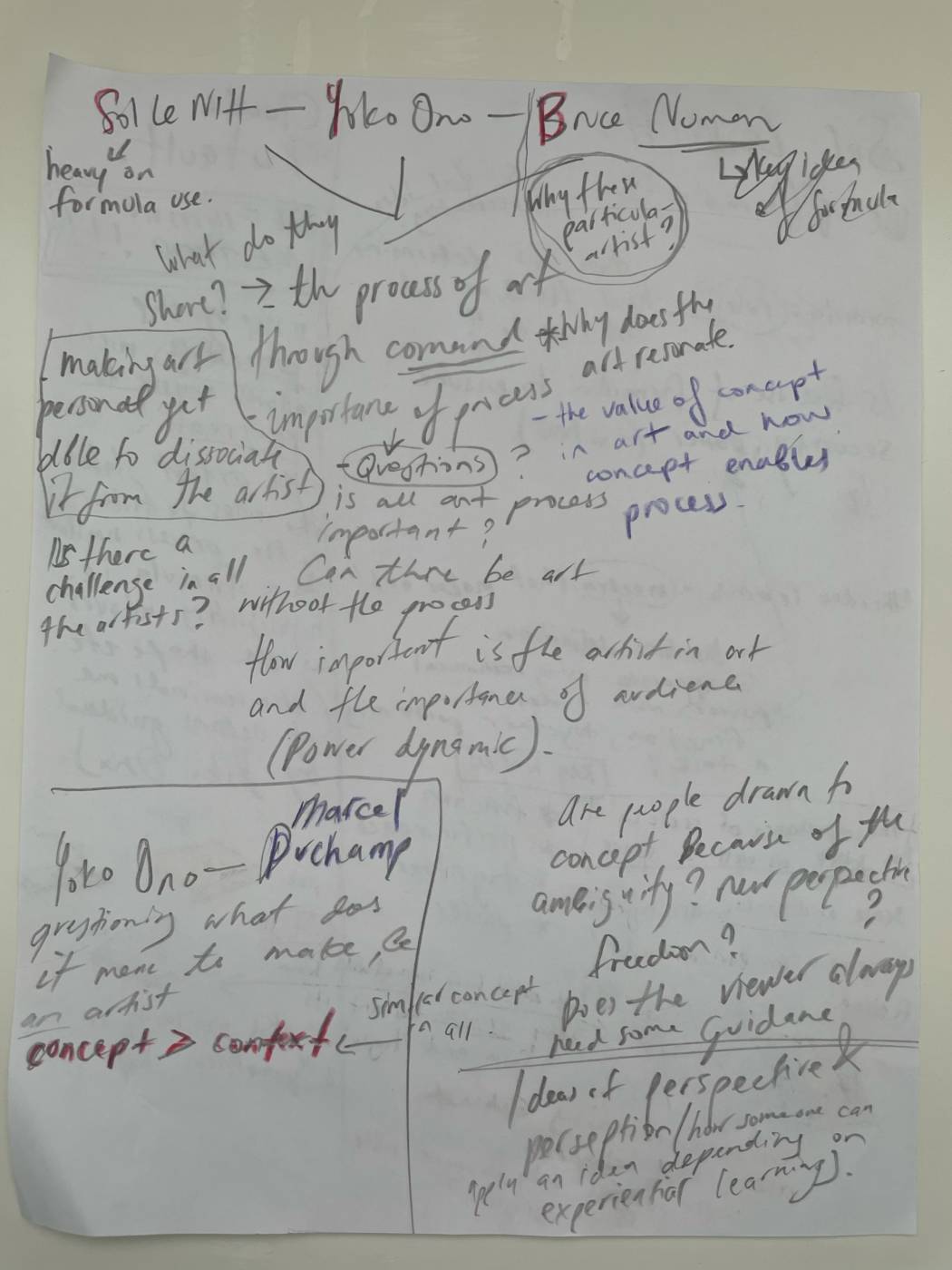

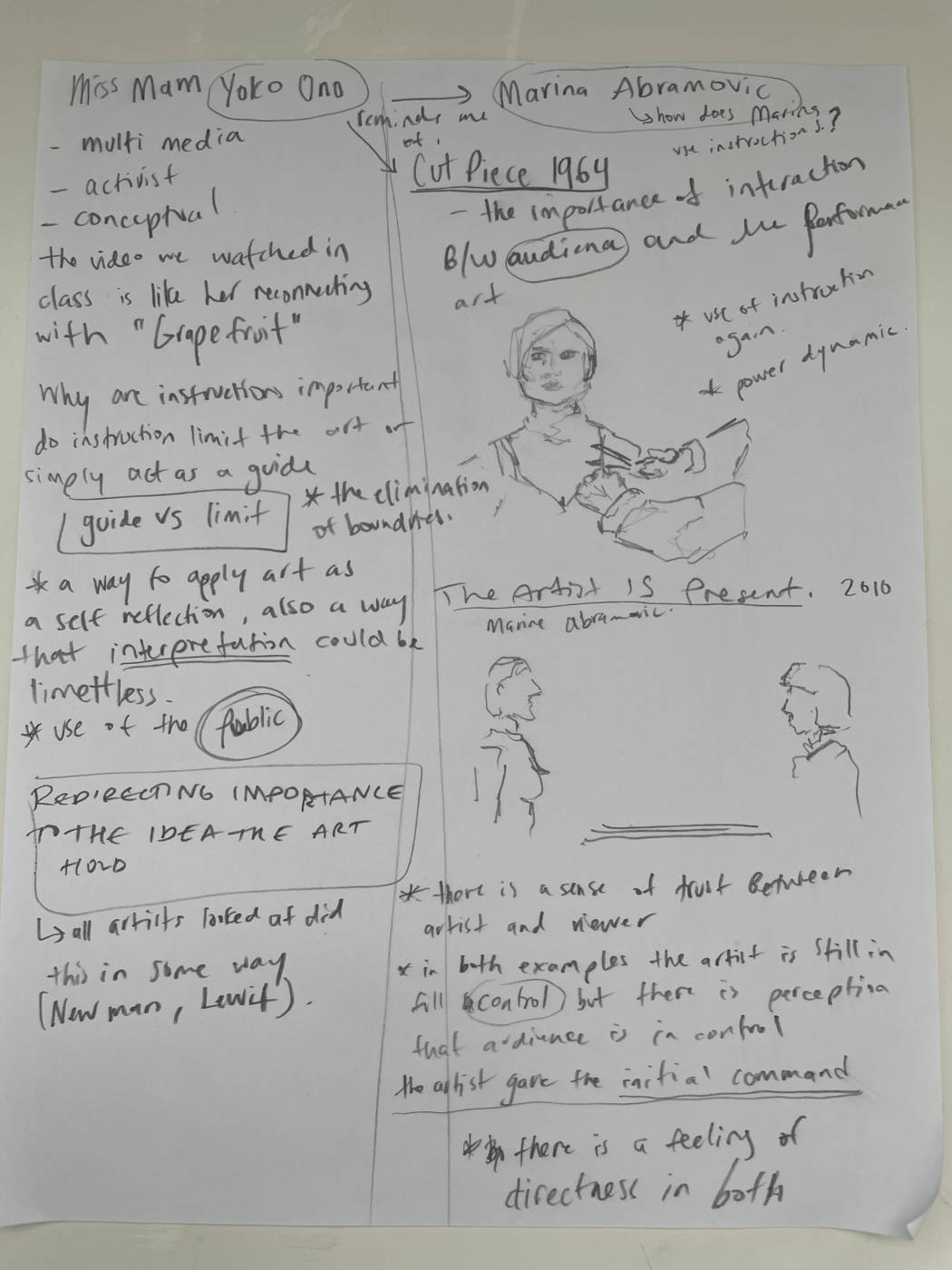
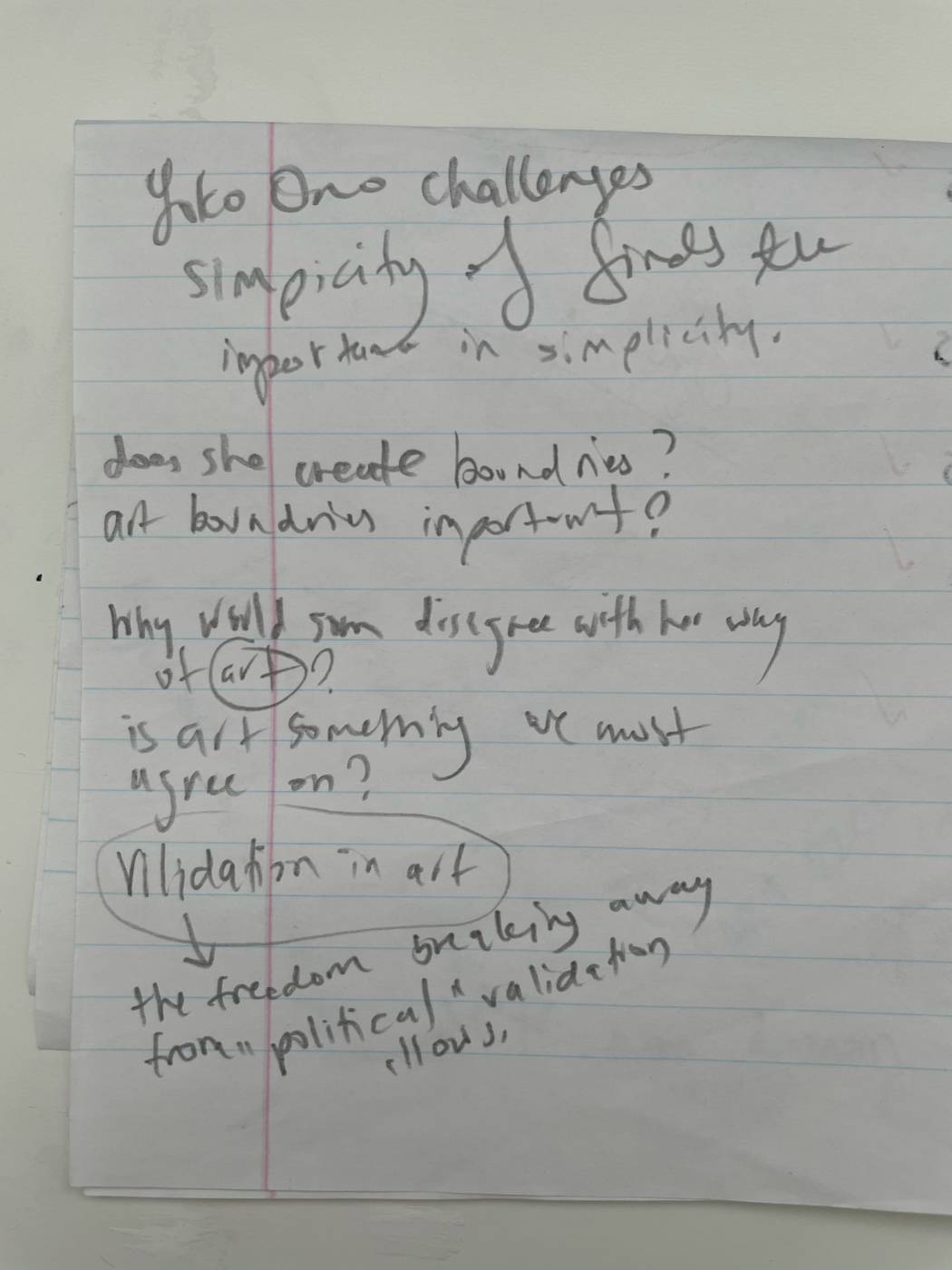


Week 2
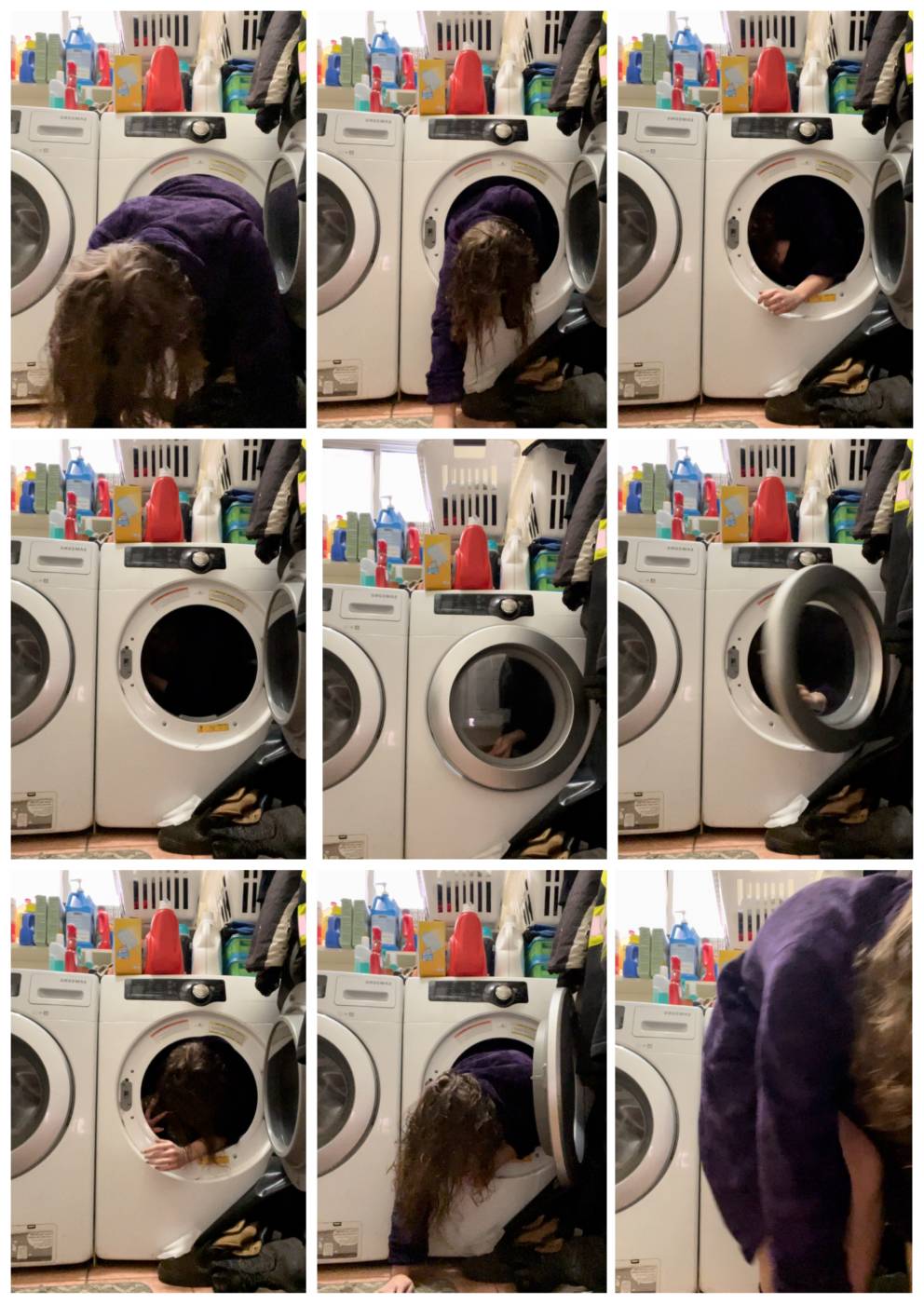

personal Notes



Week 3


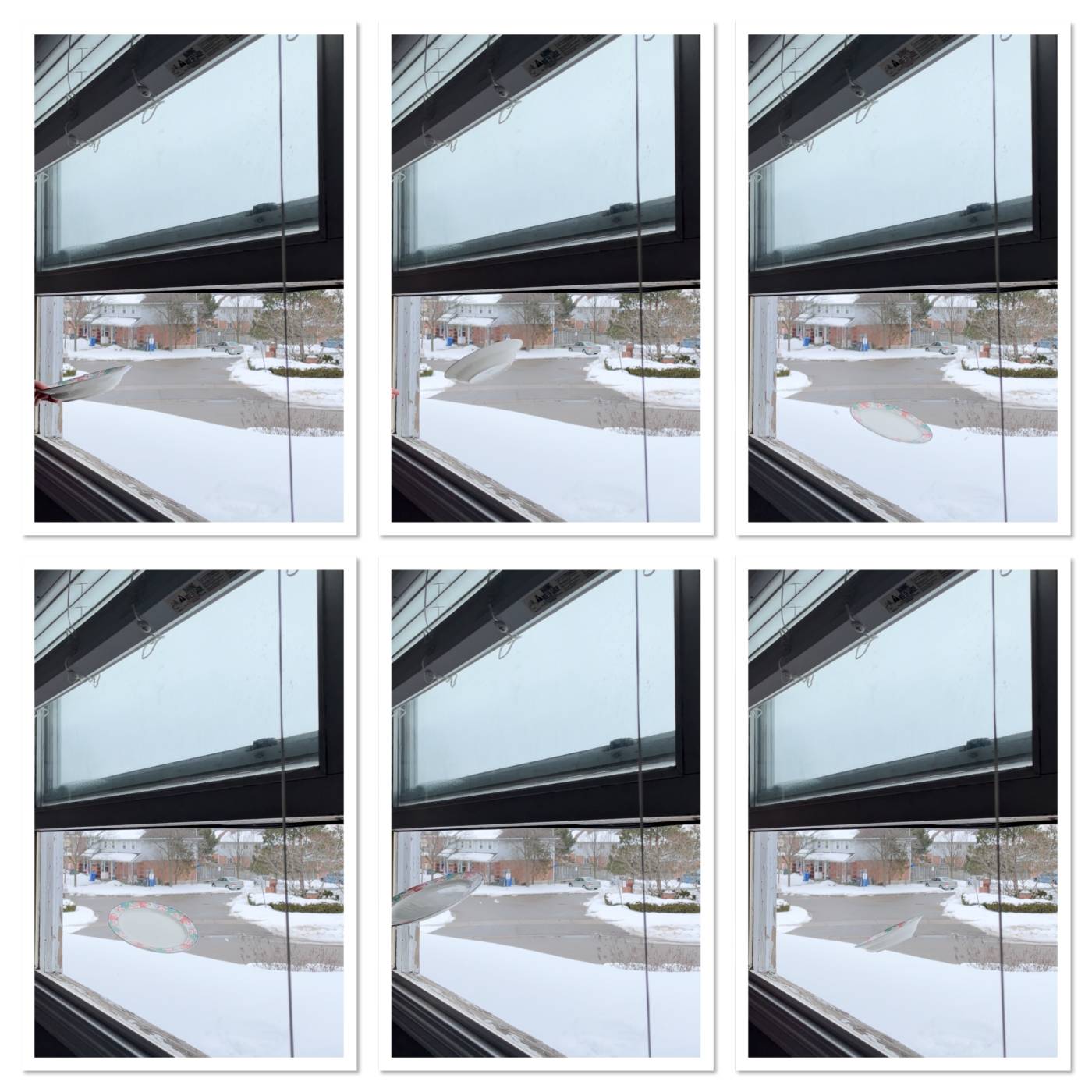
Personal Notes

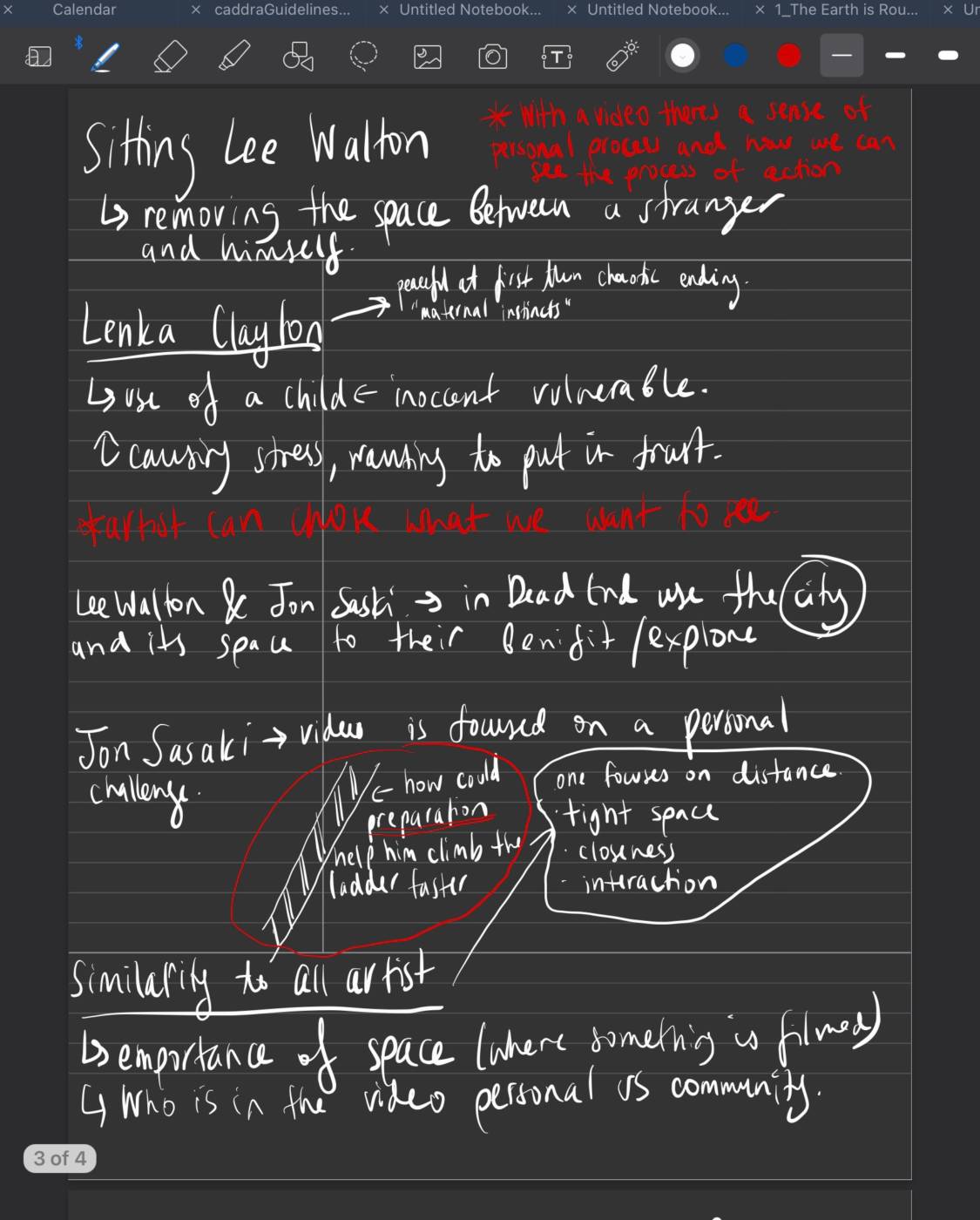
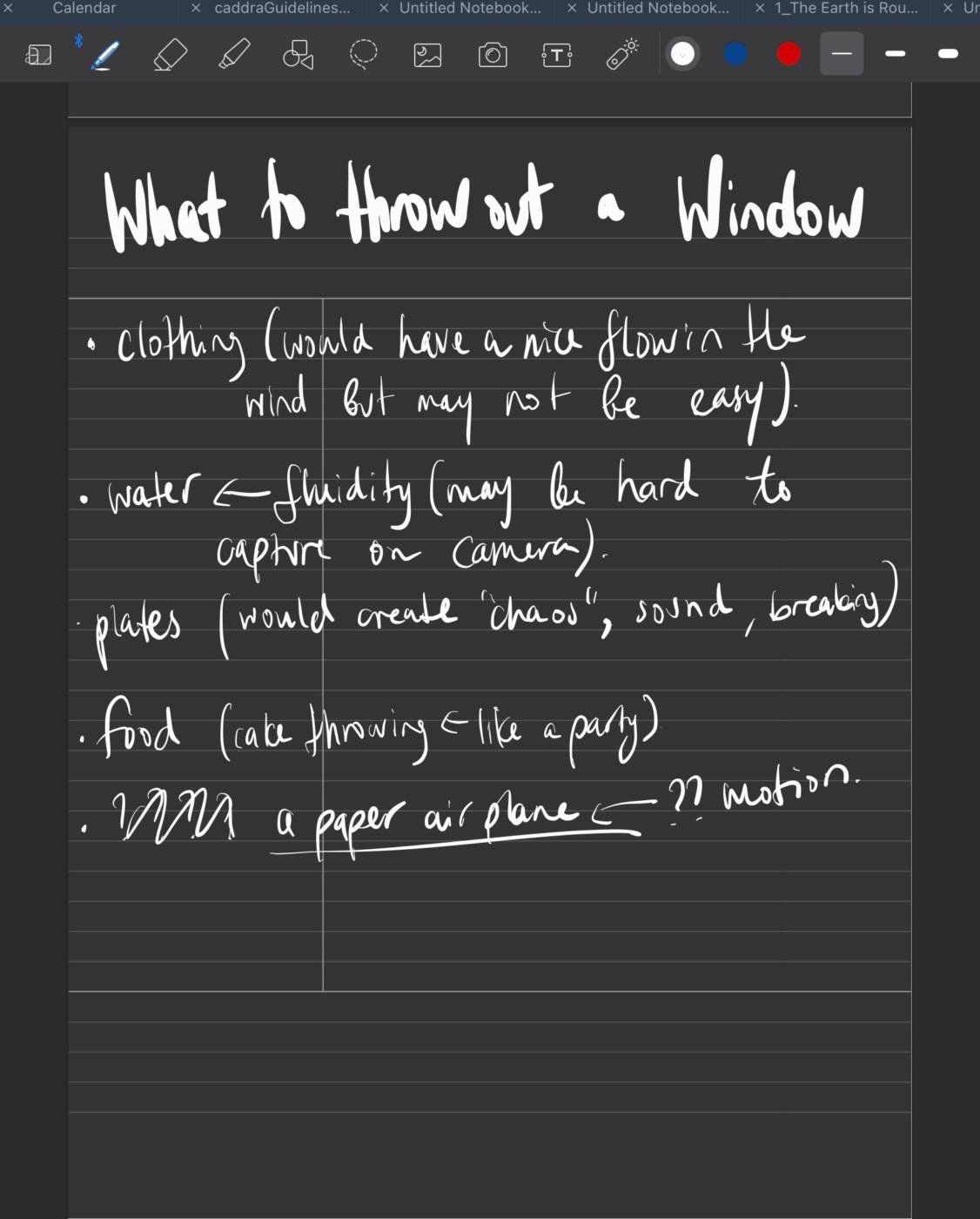
Week 4
Social Distancing Video
Portrait 1 (strengthening bonds edition)
—
Monica
—
“I work as a research assistant at the University of Guelph and so fortunately I was able to keep my job. I haven’t gone out at all this year and so my routine is quite repetitive and underwhelming at times. Also this year I realized who’s really important to me, that being said it’s those who check up on each other no matter what.”
—
Marta
—
“Personally it has been a very hard year. I was unemployed for the start of the pandemic which was challenging. My mental health has taken a hard hit this year as I constantly feel more and more isolated from the world. Although on a more positive note, I have never felt more supported or comfortable with my roommate Monica. We’re able to connect more on a personal level since were been quarantining together for months. This is a friendship, experience and bond i’ll never forget.”
—
Music/Sound Design by Brigitte Dajczer Hal’s Heart
The two people I observed were roommates out on a walk. After listening to both their perspectives on the pandemic and how it effect their relationship, it was interesting to think about how they were yet again spending more time bonding while on a walk together. One of the roommates was more fortunate in being able to stay employed while the other didn’t. Regardless of the situation they both understood and cared for each others issues. This portrait witnesses’ how the pandemic challenged peoples relationship some for the better and others for the worse. The social distancing videos brings out various perspectives that one may have never thought about before. It also allows people to find comfort in shared experiences/struggles.
Turns out the format of the video i posted early is not supported by word press and so here a MP4 version which should be accessible!
(ABOVE IS THE YOUTUBE LINK TO ACESS VIDEO IF NEW FORMAT ALSO DOESN’T WORK)
Personal Notes
What other artists have explored the concept of the effects the pandemic has had on society.
- Distancing Bench by Kimberly A Kelzer (also looking at the change of human interaction)
- Portraits of health care workers – Tim Okamura
How did art change during the pandemic
- does not permit performance art and the use of close /raw interaction
- how we view art is different (more social media presence)
Things to think about when finding who i will be recording as well as the reasonings for it and pose.
Would be great if I could catch someone in the act of providing groceries.
Want a natural yet posed video. Something/ a pose that is applicable to the strangers experience. Make the pose uncomfortable? Comfortable?
How can a singular (solo) person different from a pair of people?
Is there a different level of personalization? Selfishness? Perception of caring?
Two strangers vs two people who know each other?
Strangers would be interesting to find but also the framing the artist uses may not be possible. Would be interesting to create a interactionles interaction. (is this safe?)
Make the person pose in a particular way or allow them to pose themselves?
Week 6
This was a great article to read as it brought attention to an issue that many of us have experiences but very rarely talk about. When wearing a mask some of our key expressions are hidden, and typically they are vital for social communication when conveying emotions. Recently I had gone to meet a friend and we both decided that it was necessary for us to wear masks due to current events. As we interacted our conversation seemed to be “normal”, I had noticed though that their eyes were drifting, almost like they weren’t present. But because I couldn’t see their mouths, it was almost as if I had no supporting evidence that something was wrong, and also I felt that if I said anything without the “proof” I could possibly offend them. It was only after we had parted that they told me something was bothering them. I felt guilty and was frustrated with the fact that maybe if I could have seen their entire face (especially the mouth) I would have been able to be there for my friend. Levinas explanation of faces and vulnerability truly stood out to me, since many times words can create a new truth but regarding the face, it usually is representative of one truth. Without my face I am distant, a stranger, someone who observes. I noticed that my personality has changed, I am less of an extrovert and feel inclined to be anti-social with strangers; whether it be for my safety or a learnt habit. A new way to face the world will be to express our emotions elsewhere, the use of hands when speaking or using much more descriptive language. Being faceless is an important lesson which draws away from vanity and reestablished bonds within ourselves (personality).
Personal Notes
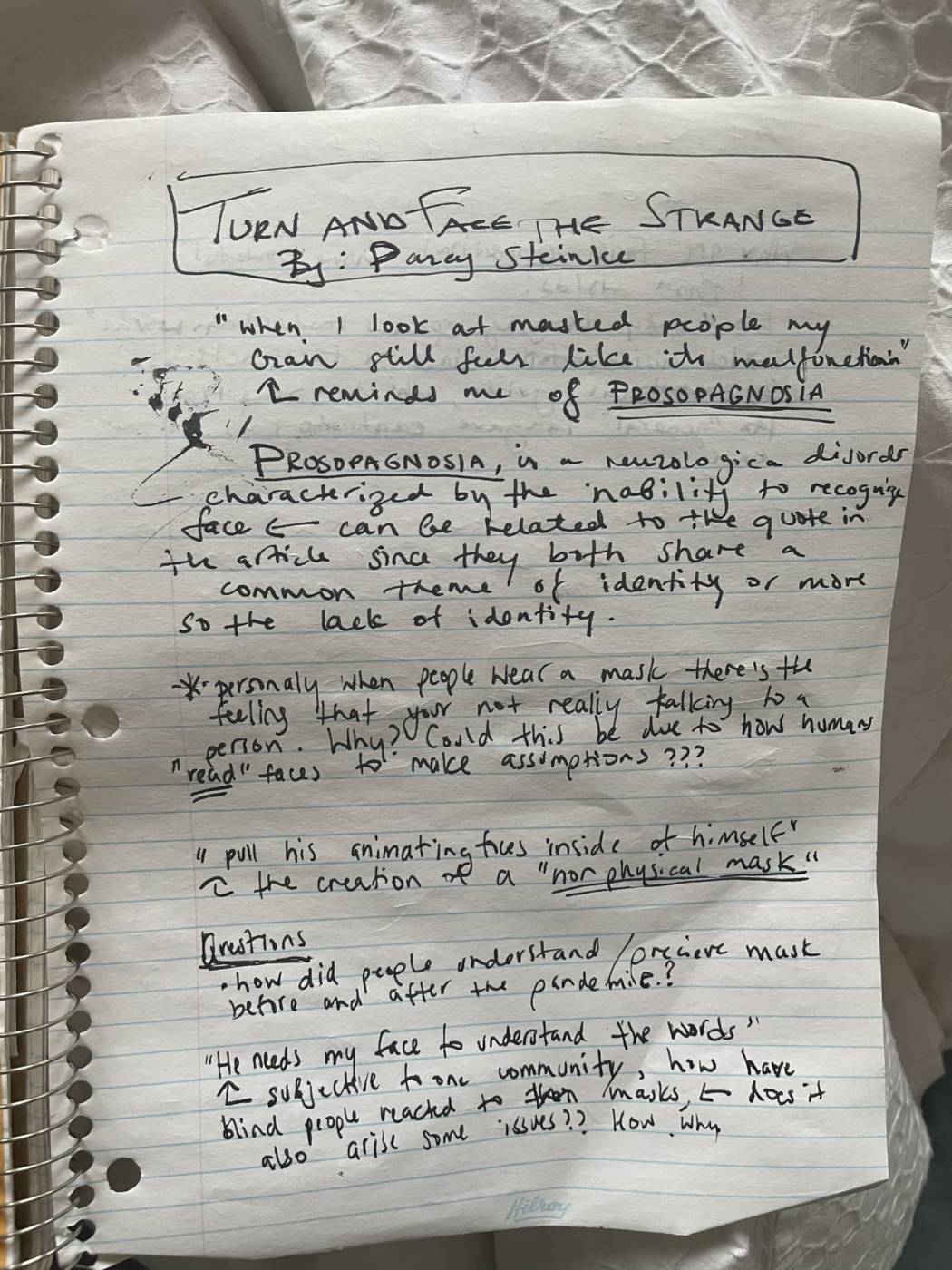


Additional Personal Notes
JANINE ANTONI photographs of her parents reminded me of Cindy Sherman (Untitled Film Still #21 1978). Both these artists use makeup and clothing to create alter characters. It is not only the makeup, and clothing that make a character but also it is how they are positioned, their mannerism and changing emotions.
This was an interesting piece to look at after reading the article. I believe that it ties in the concept of perception very well, every person who described Maurizio Cattelan had clearly had different impressions of him. This makes me believe that not only is our face unique to each person, depending on our emotional state that day it may alter your spiritual perception, based on what people see. Is our emotional reflection more important than our physical appearance? Oddly enough this work reminded me of Chuck Close as his perceptions of faces drastically change every time since he himself has the inability to recognise faces.
A New Way to Hide My Face: Concealed by Transparency
I wanted to explore/ challenge transparency. By layering transparent material I was able to give it a new quality and function which I thought was very powerful. It helped me vocalise through photographs that it does not matter what something is but rather what it can be, we have the power to change an outcome depending on the path we create. This was an interesting challenge because not only did I not know how many transparent layers I’d need to conceal myself but it was also a race against time since with each layer there was less air to breath.


Make An Alternative Pandemic Mask: Biodegradable Fragility
Creating a mask using dried petals I hoped to challenge two ideas; fragility and environmental consciousness. It has come to my attention that masks are becoming the new “plastic bags”. People are polluting the streets and oceans with used masks. Now how do I create something beautiful with an ugly underlying truth. By changing the material of a mask into something biodegradable I have created a temporary appeal to a mask but yet it maintains consciousness of its ugly counterparts/original form (by shape). Using dried petals represents the fragility of our future and personal fears of witnessing someone “break” due the pandemic.

Face As A Platform: Garden of Eden
I had decided to use my face as part of a living sculpture. I had tried to recreate the outside environment in my own home. When I look at the photograph I sense a feeling of belonging and peace, but then in contrast an overwhelming visual of suffocation by nature’s entanglements. As the dirt fell into my eyes they started to water, and as time passed not only did I start to feel menatly out of place but I had started to be physically uncomfortable. The smells of dirt and various evergreen/dried plants were also becoming overwhelming. The emotional process was quite surprising; initial paradise, to a suffocating chaos.

Week 7
Jhon Cage: Overall feelings of confusion and making you question if sound is only auditory related. Key words: redefining. How to compose silence? Importance in the process of music. 4’33” (for orchestra and soloist) Sound value is from the actions. Visual is more important than audio; since we see and orchestra the components of the orchestra and the particular chosen musical instruments we are able to deduce that we should be hearing classical music, but rather we hear the sounds of a musical environment/actions. 4’33” (death metal) yet again we have the visual of a death metal band but no sounds, the short intro at the start of the video creates a feeling of anticipation. After doing some research as to why John Cage decided to compose silence it was interesting to find out that it was in response to the continuous noise post WWII. As a musician it almost felt like the value which music had held for him has now become the value of silence. Intentional silence and music had started to share value. His works remind me of Iain Forsyth & Jane Pollard, Silent Sound. A conceptual artwork which also communicated in a unique way. Both of the artworks que into our psyche (find pattern without the pattern).
Lee Walton: Absolutely loved the audio piece by Lee Walton, it would have been interesting for the artist to do a segment where they play the C note on pianos which have not been tuned for years! This would confuse the audience (especially those with a musical background) because they would visually see the C key being pushed but the sound would be much much different. I wonder why he chose the piano. The video component was also a plus since you were able to see what kind of piano is being played and then can understand why it maybe sounds a particular way, or even find a pattern amongst visual and audio. I love the idea of using one object, and I think I may explore this in my own work. The use of repetition here was very impactful but also interesting, because even though the same note was repeated not only did it look but sound different.
Yoko Ono’s screaming piece makes me question boundaries of art, are they boundaries, should there be? Would this piece have been considered a conceptual work without her fame/title/popularity? One aspect which I liked from the video is that it is sound which everyone is and at the same time is not familiar with. If every person in the room was to close their eyes and visual a story, they would be all different and based on personal experiences. Yokko Onos sound was continuously different and unpredictable, which is why I think she was able to maintain the audience’s attention.
Project Proposal
I would like to explore the ideas of symbolism and variance. Bellow is my thought process and brainstorming for the audio piece. At times I like to focus around key questions, fears or personal relationships with a particular sound.
- Use of Repetition (I like the idea of repetition, because if I were to use an object with the same function the emphasis will be placed differently each time on its unique characteristic even though they all share that same characteristic) (to find uniquality in uniformity)
- Use of symbolism
- Mimicking natural sounds in an unnatural environment (water movement)
- Sounds of different model cars that pass by on the street (interesting to see how the sounds may progress during the day, I could stand near a busy street for a minute per hour of the day) < potentially there will be the use of silence in this audio piece similarly to John Cage in which the environment holds the power
- Sounds of different birds in my surrounding (a fear) (I have always found birds to be very peaceful, but there’s also a fine line between peaceful and chaotic, birds tend to have a natural progression of repetitive sounds, how would this should if I was to start with singular bird noises and gradually layer them up until It was overwhelming: reminds me of when you give a bird food with a smile on your face and then all of a sudden you feel trapped and attacked< does this feeling comfrom the auditory sensation of over stimulation on both parts???)
- Sounds of glasses (use of repetition and the creation of a beautiful sound by one action which ultimately produces variance in the pitch that is produced) (personal relevance, the sound emitted from sounds reminds me of family gathering and so to me it is almost as if each sound is representative of one person, also depending on the sound produced can be representative of socioeconomic status how so? Crystal and thin glass which is more expensive would produce a longer/sharp/clear sound rather than a cheaper glass material that would probably sound more blunt ) (to include video or to have it be only sound) (why this material/object?) (Lee Walton inspiration)
- Record/to mimic conversation as those around me speak (I have always loved to mimic accents and oddly enough staring at people to ensure not only the sound but emotion and attitude fit, I think it would be interesting to repeat conversations which I hear around me and jump from conversation to conversation).
Week 8 and 9 Audio Piece
Each sound had 2.1 seconds of its own time, this was in oder to show the variance of unique characteristic and how some sounds could and wouldn’t last the full 2.1 seconds depending on the material. The use of repetition was to create variability but was also reflective of a person, the glasses which made a more so “beautiful” sound could be thought to be as mature or parental figures, and the dull sounds could ultimately be characterized as a child’s glass. It was important for me to layer the sounds at the end in a natural yet unnatural way as I wanted it to be representative of this idea community / coming together. It can be interpreted as a celebration or simply a group of people coming together, depending on ones personal experience. I also wanted to bring attention to how one material that shares a function can have so much variety and be considered unique regardless of this very function due to it’s personal characteristic in auditory effects.
Week 10 & 11 Conceptual Portrait + Personal Notes
Personal Notes
On Kawara,
- The artist examines and plays with time, the effects of chronology on human compulsiveness
- Reminds me of a militarian routine
- The idea of postcards was so beautiful yet so simple at its core. It is by the sheer volume and the process of collection which made the posts cards so impactful. There had become a story, and each one was unique yet related in one way or another (there was always a statement, and it was always addressed to a person) The viewer is able to focus as well as be overwhelmed by the abundance of detail.
- “Today” series, 1966-2013, it is interesting to think how every date can have a different story depending on the viewer. One date may hold no value to one person but for the new viewer it may bring overwhelming feelings depending on the relationship/experience/memories the audience has with the date. Why is time important? The power an artist holds is the ability to redefine any concept, even the notion of time.
- Is his art a form of self reflection? Meditation? Discipline?
- A sign of continuously life, the importance of everyday no matter if it was a productive, happy or emotionally staining, as long as you have the ability to move forward the process of art continuous
John Baldessari
- The use of repetition, to elicit feelings of frustration? Order? Confusion? Stability?
- “I will not make boring art”, challenging the meaning of what is/ can be considered as art (similar to Duchamp)
- A new form of making art, The choice of words being so blunt and direct personally made me think about the role of an artist and if there is any one role which we hold
- Another artwork of his that stood out to me was “What is a painting” 1986, yet again there was an emphasis on the power of works and how a conceptual idea acts as art. Also in this artwork it was not he himself who painted on the words which brought up another very interesting idea in the process of art creation; is the artist’s “hand” as important as the artist idea, and should one hold more “value” than the other
Adrian Piper
- The engagement of social critique and conceptual statements
- The limits of self and viewer
- “ transformed herself into an odd or repulsive person and went out in public in” I think that this idea is centered around social norms, pushing the boundaries of perception
- The artists hold a powerful energy as the directness behind her art allows the work to stand out, she is able to go beyond social constructions and in turn allow the viewer to think about the role they play in society
- the figure is also used as a tool (importance of gestures)
Conceptual Portrait:
Formula: make the unconventional unconventional. I have decided to create a series of photographs in which I document myself using an object and giving it a new alternative/unconventional function and meaning. The idea I was exploring is necessity. Is there a need for so many materialistic items or is because of our privilege we are able to chose a function rather than create a function. Refrensing Adrian Piper by making commentary on social norms which ultimately can have negative implications (the idea of over consumption, pollution, the lost connection between person, function and action)




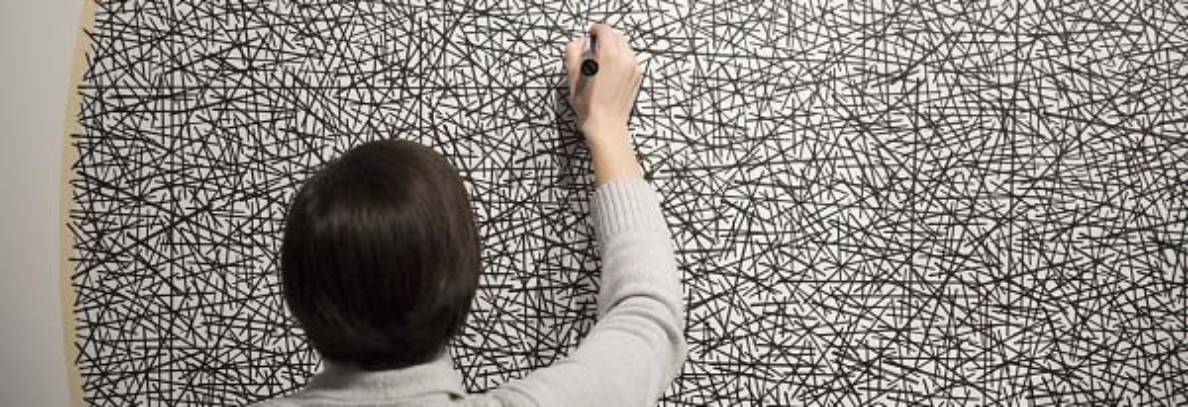
Missing some work here Oriana, I’ll come back later this week to see if there is more to grade –
Diane
Hi Oriana,
W1: Notes on Sol Lewitt, Yoko Ono, Nauman complete and thoughtful, Kilometre image and description- is it the notes/drawing? not clear – missing description.
W2: Image of Abramovic/Stillness gesture, and description – amazing – in the dryer! Glad you were safe and really found an unusual site, and pushed yourself. Good engagement with the film.
W3: 6 conceptual sentences great, Defenestration image and description – good – I appreciate the idea of throwing the dishes out the window – wish it were clearer that this was happening, and how it might have felt – sometimes you need to talk many pictures from multiple perspectives to get an undistracted view, and an interesting composition, and a sense of the action.
W4: 1 Distancing video portrait, and description great – and real understanding of the Hannah, but the videos are missing – wish I could see them!
Overall, good evidence of curiosity and full engagement with material, and level of understanding of critical ideas at play, keep improving technical investment and effort, and keep seeing how far you might go with experimentation (not knowing what might happen) and adventurousness – for example taking some ambitious risks, extending things out beyond familiar zones, increasing scale etc.
Thank you for the attendance and engagement in class, and if you would like to talk with me about your work in progress, readings, exercises, one-on-one comments on your work, and grades – send me an email in the morning to book a 15 minute appointment during the optional contact hours: Thursdays 11:30-2:30.
And you can show up to a zoom meeting with Nathan anytime during these hours to ask your questions, and get tech support for using software and finishing your projects:
Mondays and Thursdays 11:30-4pm.
Thank you for your comments and feed back, I will most definitely try to push the boundaries for future projects as well as dive deeper in my personal notes. Regarding the video I posted two, one of which does not load but the second one seems to be working and I’m confused as to why your unable to view it. I will be emailing Nathan and maybe I could repost it as a YouTube link? Hopefully that would be accessible to you. Let me know if this would be okay.
Ok Oriana, let me know if you repost and it works, thanks!